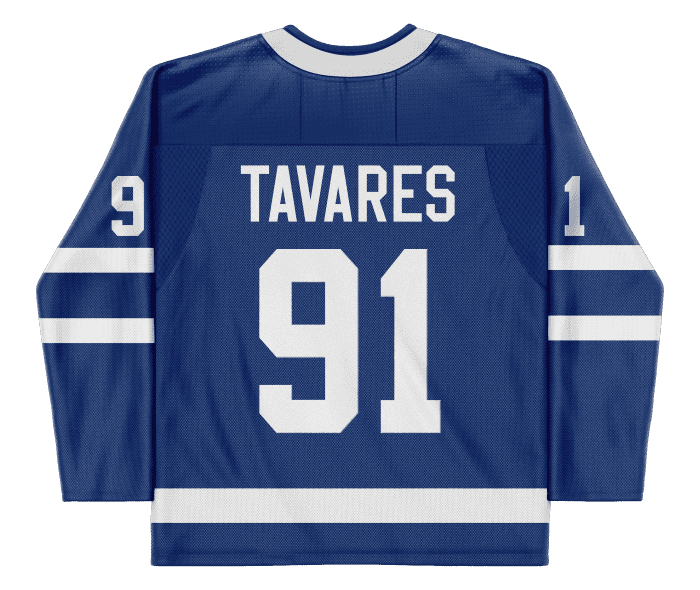Daily Faceoff is a news site with no direct affiliation to the NHL, or NHLPA
Toronto Maple Leafs NHL Line Combinations
Last updated: 2025-12-09T15:08:30.917Z
Source: Last Game (2025-12-08)
Click player jersey for news, stats and more!
Click player jersey for news, stats and more!
1st Powerplay Unit
Click player jersey for news, stats and more!
2nd Powerplay Unit
Click player jersey for news, stats and more!
1st Penalty Kill Unit
Click player jersey for news, stats and more!
2nd Penalty Kill Unit
Click player jersey for news, stats and more!
Injuries
Click player jersey for news, stats and more!
Badges:
Game-time decision
IRInjured Reserve list
DTDDay-to-Day
OUTOut
Maple Leafs Lineup Combinations
Want to know the latest updates to the Toronto Maple Leafs lines? Then you’ve come to the right place because at Daily Faceoff, we keep an updated up-to-the-minute depth chart for all 32 teams in the NHL so you know exactly who is suiting up and where they are expected to play their shifts.
Knowing the Maple Leafs lines is imperative to the success of any dedicated fantasy manager, avid sports bettor, or diehard fan that wants to stay in the loop. Use the information found below to help influence all of your DFS picks and you see who’s expected to play in the Leafs lineup tonight.
Parts of the Daily Maple Leafs Lineup
We’ve compiled the latest Maple Leafs lineup so you can look up-and-down the depth chart and see exactly how they’re set to approach their next matchup. From the starting lineups, to special teams and injuries, you can find everything you need to know about the Maple Leafs lineup before they hit the ice.
Forwards
When looking at the forward line combinations on the Maple Leafs, it’s important to understand the difference between lines one through four. While each line consists of three players (one left wing, one right wing, and a centre), each line is equipped with varying levels of skill, talent, and purpose within the team strategy.
The first line is typically where you can find the best players within a roster. Often this line will be given the most shifts throughout a matchup, as well as used to close out games. First lines typically have a high offensive upside and will be the starting forward line come puck drop.
The second line is generally similar in skill when compared to the first line, and depending on the depth of the team roster there may be superior talent on the second line than what is found within the first line.
The third and fourth lines generally receive less ice time than the first and second lines but still serve a valuable role on the team. Often used as “grinders,” the bottom-six forwards typically use their physicality and ferocity to wear down opponents, while goal-scoring is left to the top-six.
There is no one way to set a lineup within hockey, with each team possesses their own ideology in terms of lineup combinations. Often, this is a learning process for coaching staffs over the course of a season as they discover which players mesh well and have complementary skillsets, what stick hand each player uses, and which players are producing on a game-to-game basis.
Defence
In hockey, each team plays with two defencemen on at a time, typically with three defensive pairings within their lineup. Defensive pairings, much like forward lines, are decided based on a number of factors such as play style, stick handedness, experience, and overall talent.
Generally, you’ll find a team’s most-skilled defencemen in the top pairings. These are players that excel at bringing the puck across the blue line as well as making clean outlet passes to forwards down the ice. As you go down the defence lines, you’ll likely see more traditional defencemen that like to stay-at-home and protect their own end, leaving offensive production up to forwards.
Power Play
Each NHL team has their own unique power play strategy—some using a traditional three forward, two defenceman line, while others opt for four forwards and only one defenceman. A pivotal part of any hockey team’s lineup is the power play (PP) unit, which can often make-or-break a squad’s success throughout the season.
Teams need to utilize their top playmakers in order to capitalize on playing with a man advantage in five-on-four or five-on-three scenarios after a penalty is called against their opposition. With puck movement being crucial for any good power play’s success, you’ll often find the best passers on a team jammed onto the top PP line generating potential high-danger scoring chances. The team’s top goal-scorer plays an irreplaceable role here by focusing on netting pucks to light up scoring opportunities.
Penalty Kill
The opposite of power play units, penalty kill (PK) lines are used to prevent opponents from scoring while at a disadvantage. Being down at least one player over power play opportunities means PK units must consist of fast and defensively skilled roster members.
Their role includes moving pucks out of their defensive zone while preventing easy shots from opponents during man-advantage situations. Reliable PK strategies are essential for teams aiming for wins under adversity.
Goalies
The starting goalies for teams significantly impact game outcomes—being one among hockey’s most crucial positions per match night. Depending upon skill disparities between rostered goalies themselves—one goalie might dominate starts whereas others split equally across matches showcasing balanced talents alongside flair uniqueness shaping respective gameplay approaches altogether!
Injuries
Inevitable injuries affect hockey dynamics—causing frequent NHL lineup alterations forcing teams retooling absent contributors’ spaces therein! Bettors must monitor injury updates closely influencing betting odds/lines significantly ensuring informed decisions beforehand accordingly!
How to Use Maple Leafs Lines for Daily Fantasy and Sports Betting
Be sure to factor in the latest Maple Leafs lines for your daily fantasy lineup and sports betting picks so that you can gain a competitive edge and score the win as a result. Being aware of the lineup combinations expected for the next game can give you better insight as to how you want to game plan for your next matchup/bet.
For fantasy hockey, if you have Maple Leafs players on your roster, it’s important to note where they currently sit in terms of the Leafs lines so that you can understand their expected production on a night-to-night basis. For example, a first line forward that appears on the power play is likely to be a more valuable piece to your lineup when compared to a third line grinder. This information is also key to making sure your bets have the best chance of hitting, as you will be in a better position to understand how the upcoming matchup may play out based on the personnel being used by the Maple Leafs against their opponents.
How Often Does the Maple Leafs Lineup Change?
Ultimately, the lineup for the Maple Leafs is determined by Head Coach Craig Berube and will be decided based on what he thinks gives his squad the best chance at winning their next game. The Maple Leafs lineup is susceptible to change on a game-to-game basis. There are a number of factors that go into the need for changing the Leafs lineup such as surging/slumping play as a team member may be moved up or down the depth chart, in-season roster changes such as injuries, signings, and trades, as well as strategically in order to take advantage of a weakness in an opponent’s game plan.























